How to plant rhododendrons in open ground in spring and autumn: rules for growing and care
Rhododendron is an ornamental shrub of the heather family. The Rosewood is wonderful in every way: it has very original leathery leaves and gorgeous large inflorescences. It blooms in spring (from April to the second half of June).
Next, you will learn how to properly plant a rhododendron in your own area, and competently take care that the plant bloomed profusely.
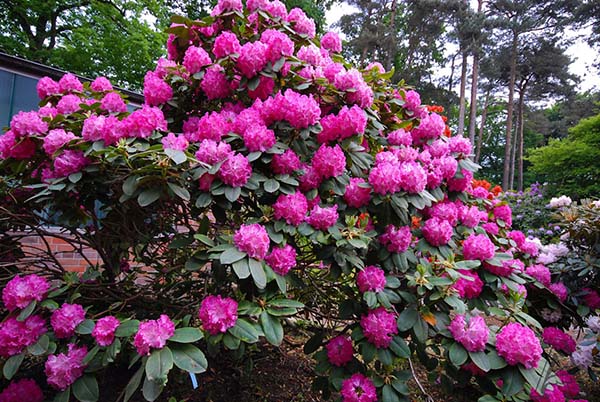
Content
Types and varieties of rhododendrons
If you plan to grow rhododendrons in the Middle Lane (Moscow region), in the Leningrad region, in the Urals or in Siberia, then you should pay attention exclusively for winter-hardy varietiesthat will be able to withstand a drop in temperature in winter to -25 degrees or more.
Such frost-resistant varieties of rhododendrons include the following: Roseum Elegance, Nova Zembla, Grandiflorum, Golden Lights, White Lights, Rosie Lights, Babushka, Impeditum Golden Lights, English Roseum, Karens, Mount St. Helens, Karaktakus, Daursky and PZHM Elite.
In general, rhododendrons can be divided into 2 types:
- deciduous (often called azaleas);
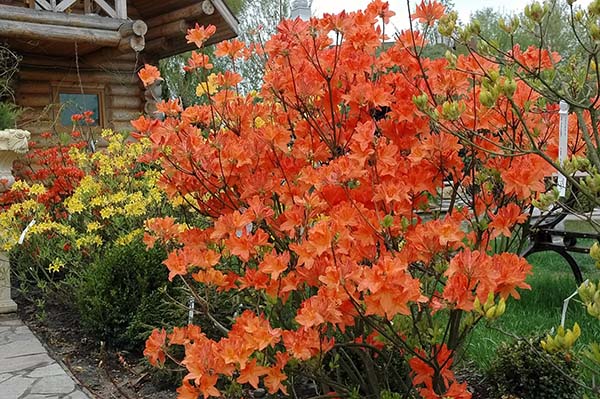
- evergreen (as a rule, they mean rhododendrons).
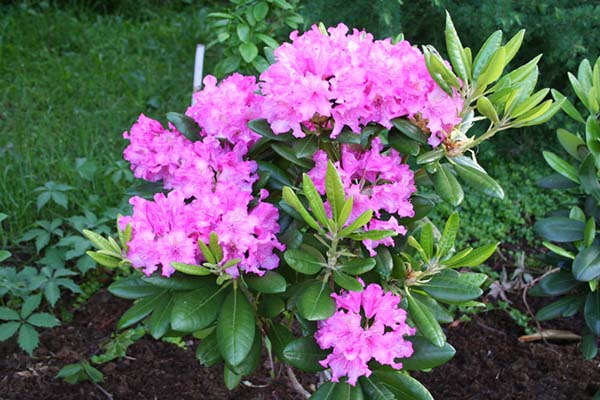
Video: varieties and types of rhododendron
When to plant rhododendrons in spring and autumn: timing
You can plant rhododendrons both in spring and autumn.
In general, in the summer it is also allowed to plant container plants (in a pot, with a closed root system), but not recommended.
If you decide to plant rhododendrons in the spring, then it is advisable to have time before the plant blooms, in other words, depending on the region (in the Middle Lane, the Moscow region a little earlier, in the Urals and in Siberia - later), this may be April - May.
Autumn planting rhododendron is carried out in the first half of autumn (september), i.e. you need to have time to plant seedlings until the second half of October... These terms are explained by the fact that the wet and cool weather is ideal for the plant to take root in the garden.
According to the lunar calendar for 2021
It can help you choose the best date for disembarkation Moon calendar.
So, favorable days for planting rhododendron in 2021, according to the lunar calendar, are:
- in March - 4-6, 12-14, 26-31;
- in April - 1, 2, 5-7, 9, 13-15, 24, 25;
- in May - 2-6, 15-17, 20, 21, 25-31;
- in June - 2-4, 6-9, 11-14, 23-25;
- in July - 6-11, 13-16, 23-29;
- in August - 5-7, 20, 21, 23-25, 27-30;
- in September - 9-11, 15, 16, 19-21, 26-28;
- in October - 6-8, 21-23;
- in November - 9-13, 22-24, 27, 28.
Unfavorable days, according to the lunar calendar for 2021, for planting rhododendron are the following dates (days of the Full Moon and New moons, as well as the period when the Moon is in Aquarius, because it is a barren and dry sign -italicized):
- in March -9-10, 13, 28;
- in April -5-6, 12, 27;
- in May -2-4, 11, 26, 30-31;
- in June -10, 24, 26-27;
- in July -10, 24-25 (24 - also Full Moon);
- in August -8, 20-21, 22;
- in September -7, 16-17, 21;
- in October -6, 13-15, 20;
- In November -5, 10-11, 19.
How to plant rhododendrons outdoors
Place in the garden
Rhododendron, like all flowering shrubs, still loves the sun (otherwise it will not bloom very abundantly). However, the plant requires mandatory partial shading, especially at lunchtime, otherwise the leaves may get burned.
In other words, you need a place with light partial shade. It is great if from 11-12 a.m. to 3-4 p.m. the plant does not get direct and burning sun rays. Moreover, the shrub does not tolerate drafts, but it must definitely provide an influx of fresh air. For example, it is good to plant a rhododendron near fruit trees (the same apple tree), which would slightly shade the shrub during the day, at a distance of about 1.5 meters from the crown.
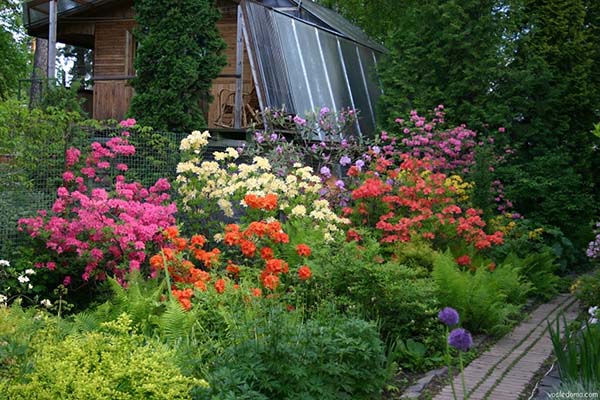
Note! At the same time, deciduous rhododendrons (yellow, Japanese, Kamchatka) may well grow well in sunny areas, while evergreens in such open places will suffer from winds, desiccation and sunburn.
As for what is the best way to plant rhododendrons and create a beautiful composition, the best neighbors will be plants of the heather family, as well as conifers, in other words, all crops that love acidic soil.
Required soil
Rhododendrons can only grow in acidic soil (pH 3.5-5.5)... In the usual neutral or even worse alkaline (pH 6-7 and above), these plants will grow very poorly, literally 1 season, and then they wither and disappear (as a rule, they simply do not survive the winter).
Why is that?
The fact is that in rhododendrons, like in other heathers (blueberries), on roots have mycorrhizathrough which they feed (receive water and nutrients), in other words, their root system develops in close symbiosis with these specific fungi. Moreover mycorrhiza can only live in an acidic environment.
Therefore, to fill the planting pit, you will needsour high peat... It is sold ready-made in garden stores, or you can dig it up in a forest swamp.
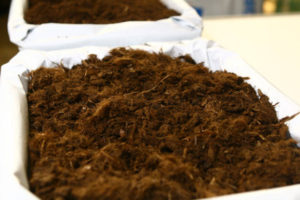
You will also need coniferous litter (these are needles and twigs of conifers crumbling to the soil
Advice! However, first you should find out the acidity of the soil on your site.
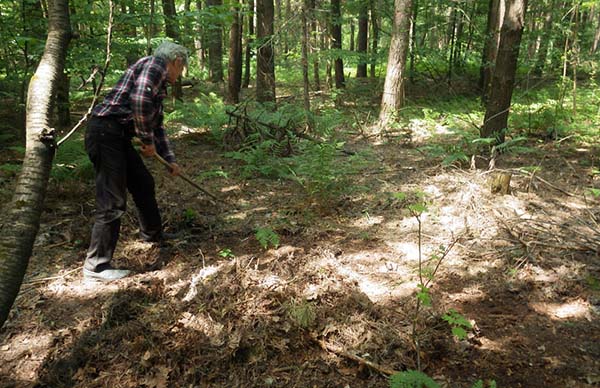
Alternatively, you can simply purchase in the store special prepared soil for heather, azalea or rhododendrons.
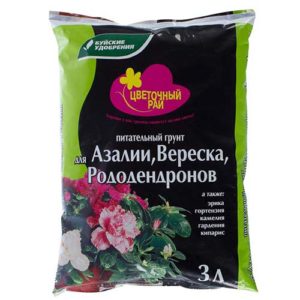
In this case, the soil should be good drained, moisture and breathable.
If the soil is too heavy and clayey, in other words, moisture stagnates, then the bushes will simply die, the same applies to nearby groundwater (closer than 1 meter).
Landing pit
Although the rhododendron pot is usually small, landing pit you need a large enough, it should be about 3 times larger than the root system of the seedling. Dimensions the following are required: depth - from 50-60 centimeters, width - 60-80 centimeters, depending on the size of the seedling and soil.
Important! If the soil in your area is clay, then a 5-10 cm drainage layer should be laid on the bottom. You can use any inert substance as drainage, that is, gravel, crushed stone, coarse sand is suitable.
If you want to plant several rhododendrons next to each other, then it is advisable to do this at a distance of at least 1 meter from each other.
Video: personal experience of growing rhododendrons
Direct landing
Step-by-step instructions for planting rhododendrons in open ground:
- Choose the best place on your personal plot.
- Prepare the planting hole and potting soil to fill it.
- Fill the pit halfway with soil (Do not fill any slides!).
- Gently knead the pot, pull out the seedling along with the earthen clod and place it on the ground.
- The root collar of the plant should be slightly above ground level, so either add or remove the soil from the hole. The fact is that these ornamental shrubs do not like when they are planted with a deepening of the root collar.

- Fill the remaining space with nutritious soil and then tamp down a little.
- Spill abundantly from a watering can, wait a little until the soil mixture settles, and then add more soil.
- It remains only to mulch the hole with the remaining coniferous litter or pine bark (about 3-5 centimeters), fresh coniferous sawdust... Mulch will help retain moisture and keep the soil from overheating.
Advice! It will be very nice if you mulch the surface of the soil with cones.
Video: how to plant rhododendrons
Outdoor rhododendron care
In order for the rhododendron to grow well and bloom profusely in your summer cottage, it needs proper and timely care.
Rhododendron, like all heathers, does not tolerate drying out of the soil. And the peat mixture in which this shrub grows dries up very quickly, especially in summer when the weather is hot. Therefore, it is worth paying attention to the plant regularly and on time to water.
For rhododendron, soil moisture is also very important.
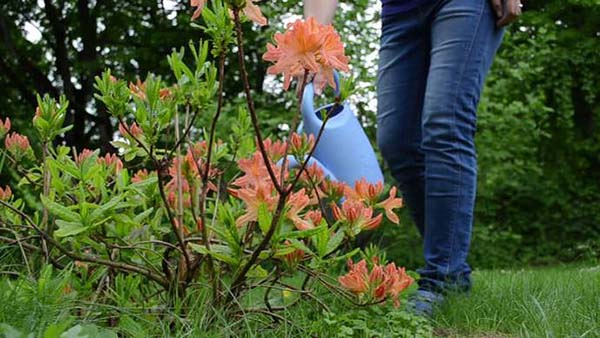
Advice! In the first 2 years, it is highly recommended to do surface spraying in dry weather, in other words, watering directly over the crown.
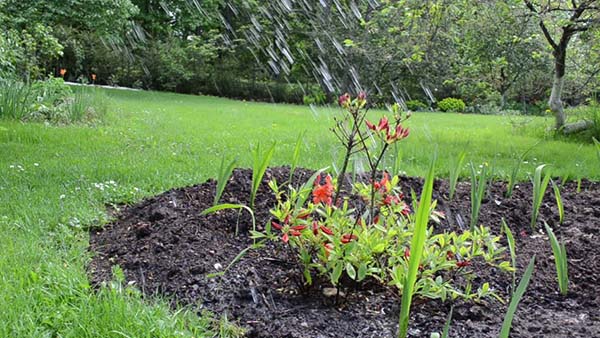
Weeds must not be allowed to grow in the near-trunk circle of the shrub. To avoid this, it is recommended that even at the planting stage, be sure to mulch the trunk circle and, if necessary, add mulch, as well as weed and loosen.
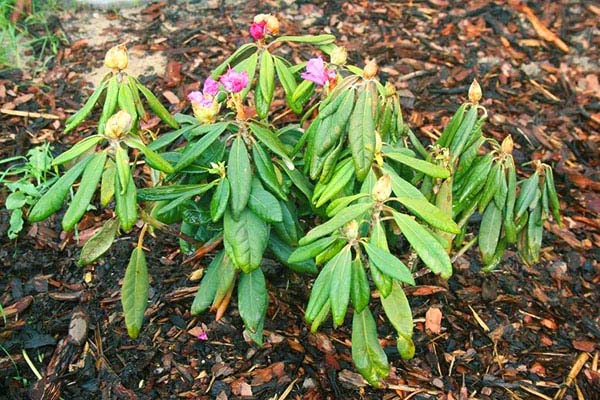
Top dressing
In early spring rhododendron good feed any nitrogen fertilizer... For example, you can prepare a solution ammonium nitrate (20 grams per 10 liters), or even better use more sour nitrogen fertilizer - ammonium sulfate.

If your rhododendron has bloomed profusely, then to replenish its strength, a mandatory summer top dressing.
Concerning such dressings, it is advisable to make 2-3 dressings with acid fertilizers during the summer. Perfect for this ready-made fertilizers for azaleas, rhododendrons and other heather crops.

The second (potassium-phosphorus) feeding of rhododendrons in the summer should be done at the end of July. For this it is worth using potassium sulfate (20 grams per 10 liters of water), and superphosphate... (30 grams per 10 liters).
Important! In no case do not feed your rhododendrons wood ash! This potash fertilizer has alkaline reaction.
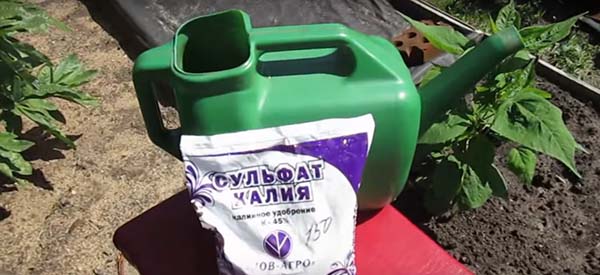
At the end of flowering in the first 2-3 years, it is desirable promptly and accurately remove faded inflorescencesso that rhododendrons do not waste energy on seed formation.

After the rhododendron has bloomed, if it feels good and you take proper care of it, then it will definitely give young shoots. If they do not appear, then this is a clear signal that the care is incorrect or insufficient (for example, watering).
Video: caring for rhododendrons
Rhododendrons hardy enough (they can withstand a drop in temperature from -25 to -40 degrees), however, in the case of a snowless winter, the plant may freeze slightly, so it is advisable to cover the near-trunk circle with a layer of 5-8 cm (for example, fresh coniferous sawdust).
Note! About care for rhododendrons in the fall and about their preparation for winter you can read more in this article.
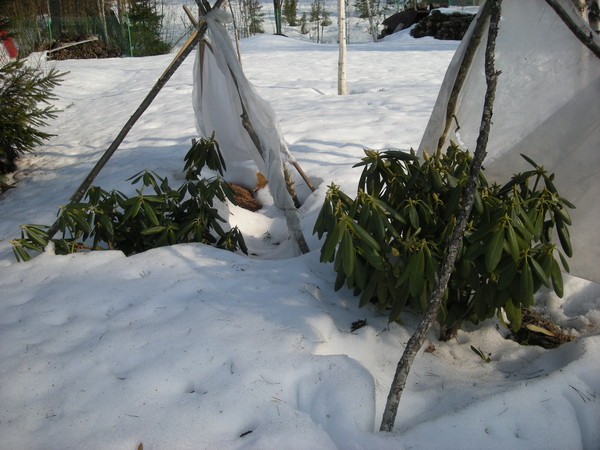
How to transplant a rhododendron to a new location
Sometimes it happens that the plant does not take root in the chosen place and needs to be transplanted to a more suitable one. Rhododendrons are not afraid of transplantation, because they have a fairly compact root system, however, you should be guided by some rules for changing the place of residence of a shrub:
- As for the timing, replanting a rhododendron, as well as planting for the first time, is either in early spring or in autumn.
Just don't do it this summer!
- It is best to handle shrubs in slightly cool and cloudy weather, but not in dry and sunny weather.
- When you dig up the plant, despite the fact that the root system is small (within 40 cm), in no case should it be damaged.
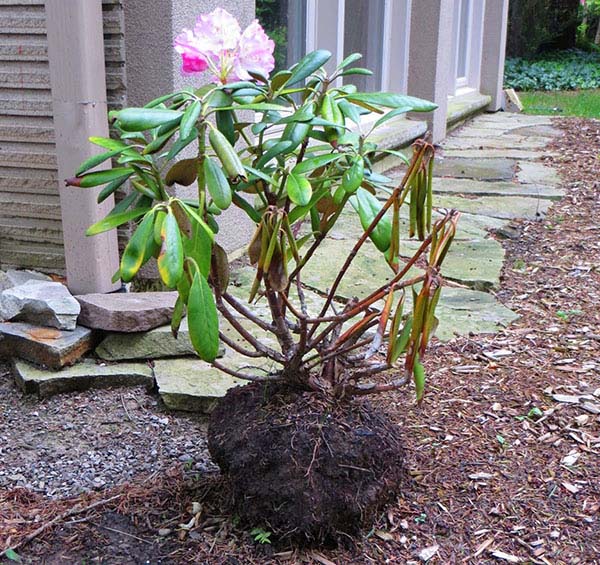
- It is imperative to dig up the plant together with an earthen lump, which should not crumble when transferred to another place, therefore, the movement must be performed using a wheelbarrow, placing an earthen lump on it.
- Immediately after transplanting, it is advisable to shade the shrub with something and water it regularly.
If you liked the pleasant shapes and luxurious flowers of the "alpine rose" (another name for rhododendron), then do not drive away from yourself the idea of settling this beautiful shrub in your summer cottage. The correct and energetic chores of planting and grooming will more than pay off with a truly unforgettable sight.
Video: planting and caring for rhododendron


